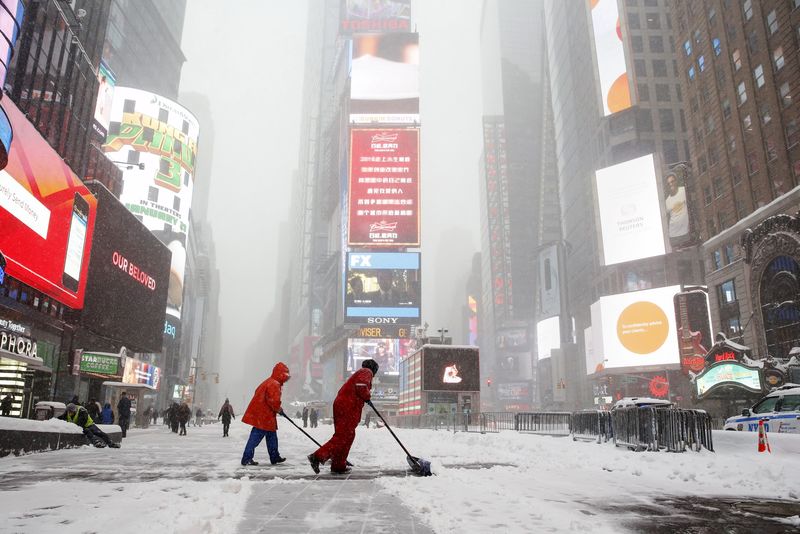Investing.com - U.S. natural gas futures rose sharply on Monday, reaching a four-week high as forecasters put the U.S. East Coast on a blizzard watch starting as early as Monday night.
U.S. natural gas for April delivery rallied 5.5 cents, or around 1.8% to $3.063 per million British thermal units by 8:10AM ET (12:10GMT). Futures touched a session high of $3.089 earlier, the most since February 10.
It posted a gain of 6.4% last week as forecasts showing cooler weather on the way boosted the heating fuel.
Weather experts predicted the U.S. Northeast region could see 12 to 18 inches of snow from Monday to early Wednesday, while sub-freezing temperatures were forecast in the upper 20s Fahrenheit, the National Weather Service said.
New York City issued a snow alert for Monday night into Tuesday, expecting snowfall rates of up to 2 to 4 inches per hour Tuesday morning and afternoon, with gusts of up to 50 mph.
The storm comes near the end of an unusually mild winter along much of the East Coast, with below-normal snowfalls in some areas, including New York City and Washington DC.
It was the warmest February on record in nearly the entire area, according to the Northeast Regional Climate Center.
Meanwhile, market participants looked ahead to weekly storage data due on Thursday, which is expected to show a draw in a range between 49 and 59 billion cubic feet in the week ended March 10.
That compares with a withdrawal of 68 billion cubic feet in the preceding week, 1 billion a year earlier and a five-year average drop of 85 billion cubic feet.
Total natural gas in storage currently stands at 2.295 trillion cubic feet, according to the U.S. Energy Information Administration, 7.7% lower than levels at this time a year ago but 15.8% above the five-year average for this time of year.
Prices of the heating fuel are down around 17% so far this year as forecasts for warm winter weather weighed on heating demand expectations.
Based on data from the National Oceanographic and Atmospheric Administration, this year’s extremely warm winter has pushed heating demand for natural gas to nearly 20% below average.
About half of U.S. homes use natural gas for heating.
Without significant demand for natural gas, inventories could stay near record levels and may even continue to pull prices even lower.
